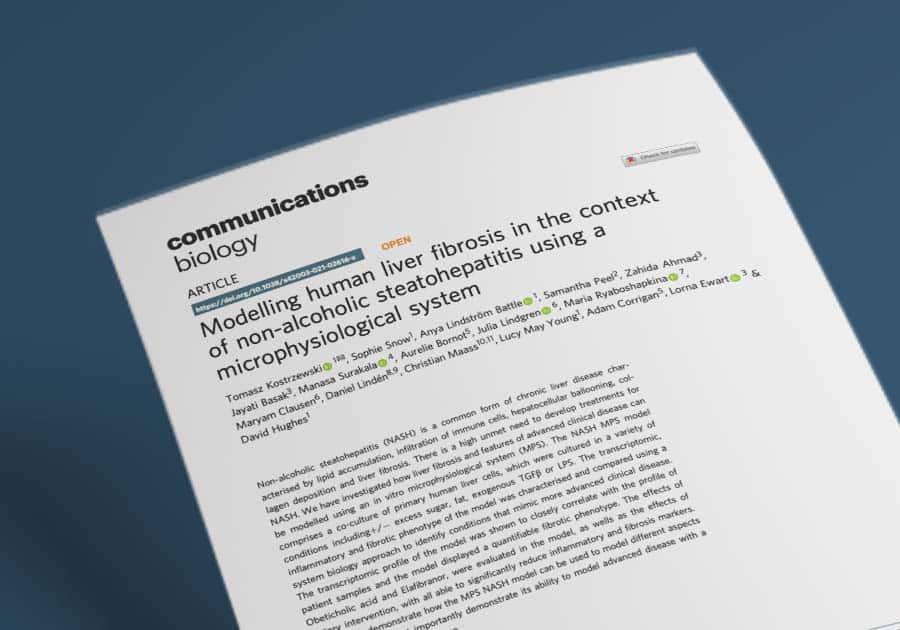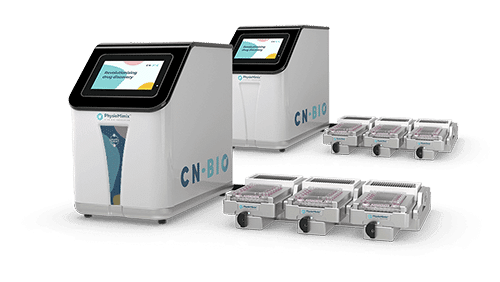Resource > Scientific publications >
Modelling human liver fibrosis in the context of non-alcoholic steatohepatitis using a microphysiological system
Filed under: Disease modeling and NAFLD/NASH

Kostrzewski et al., 2021
Non-alcoholic steatohepatitis (NASH) is a common form of chronic liver disease characterised by lipid accumulation, infiltration of immune cells, hepatocellular ballooning, collagen deposition and liver fibrosis. There is a high unmet need to develop treatments for NASH. We have investigated how liver fibrosis and features of advanced clinical disease can be modelled using an in vitro microphysiological system (MPS), or organ-on-a-chip.
The PhysioMimix NASH assay utilizes a liver-on-a-chip model (or Liver MPS), which is comprised of a co-culture of primary human liver cells, cultured in a variety of conditions including +/- excess sugar, fat, exogenous TGFβ or LPS. The transcriptomic, inflammatory and fibrotic phenotype of the model was characterised and compared using a system biology approach to identify conditions that mimic more advanced clinical disease. The transcriptomic profile of the model was shown to closely correlate with the profile of patient samples and the model displayed a quantifiable fibrotic phenotype. The effects of Obeticholic acid and Elafibranor, were evaluated in the model, as well as the effects of dietary intervention, with all able to significantly reduce inflammatory and fibrosis markers. Overall, we demonstrate how the MPS NASH model can be used to model different aspects of clinical NASH but importantly demonstrate its ability to model advanced disease with a quantifiable fibrosis phenotype.

